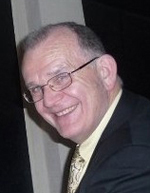Opera in Ireland: State of Play – Part 5
The Met: Live in HD
Un ballo in maschera & Aida
The Bolshoi: Live in HD
The Nutcracker

One conclusion reached after attending 10 operas in 10 weeks (see Parts 1-4 of this series) is that reduced public sector funding for the arts in this country is scandalously short-sighted.
Opera in particular is being led out blindfolded to be shot at dawn.
But should private sector philanthropy step up to take the bullet, the hooded executioners walk away laughing.
I will return, in the new year, to this and to other matters. and to proposals for the re-invigoration of opera-in-performance in Ireland.
Meanwhile …
Un ballo in maschera
This is a personal favourite of mine, so each new production is approached with a little trepidation.
Ballo was mature Verdi (Rome, 1859) and there were only five more to come; so it belongs to that small cadre of operas which revitalised and helped identify Verdi’s great post-belcanto period, with its themes of mature adult love and how that conflicted with conscience and duty.
From The Met: Live in HD series (December 08), this time seen and heard in the Omniplex Newry, we had a surprisingly spartan, modern-dress staging, in which Beaumarchais’ dictum, from 1775, that ‘what is too dangerous to say in words can be sung in music’ was both vividly and validly echoed throughout this extremely well sung production.
Verdi’s use of history as a commentary on the political struggles of Italy at that time connected mightily with audiences then, and should still do so in today’s post-Berlusconi shambles there.
By Ballo in maschera Verdi’s earlier tyro operas were well behind him, his musical language had changed, had become more sophisticated, more through-composed, and the set pieces were by then adding substance to the drama and impelling it forward even more credibly than was the case, say, with his contemporaries working in France.
Yet, for all that, the characters in Somma’s libretto remain irritatingly depthless, neither as subtle as in Traviata, nor as supercharged as in Trovatore.
However the powerful love duet in Act 2 (sung by Chicago soprano Sondra Radvanovsky and Argentine tenor Marcelo Álvarez) was non-tactile in the extreme, a decision in the direction of the scene which intensified the adulterous aching and unconsummated passion.
Fabio Luisi, currently principal conductor at the Met, covering for James Levine who is convalescing, switched effortlessly between the passion and the lyricism and conveyed so well this music’s frequent clutchless key shifts.
The three main characters (the third was sung by Siberian baritone Dmitri Hvorostovsky) are as decent and as honourable as we’ll get, but the others, especially the conspirators, are much less well defined, while Ulrica, a distant cousin of Azucena (sung by American mezzo Stephanie Blythe) needed some spookier special effects to match her darker, more atmospheric music.
Renato’s music is the most complex in this opera and, by the start of Act 3, Hvorostovsky had us riveted to our seats by his total and fatal misconstruction of what was happening between his wife and his king, and by his abject moments of remorse at the very end.
The only two CD recordings I have of this opera are: an EMI package, with Callas/conductor Antonino Votto (1956), and a Decca, with Tebaldi/conductor Bruno Bartoletti (1970).
It is worth investing in both, if only to compare readily the two greatest soprano voices of the recorded era.
As the mature Verdi refined and redefined opera in mid 19th century Europe (Wagner of course was at it too, north of the Alps) by highlighting and foregrounding, in his dramme per musica, the fundaments of all our personal lives: love, jealousy, loyalty and hatred – these became the invaluable connective tissue linking us to the drama in his imagination and to the expression of that imagination in his music.
Only Mozart came close to achieving this, before Verdi and Wagner, and only Puccini succeeded afterwards, for no-one else comes near, and so these four composers are quite simply the voices of a world that is no more.
Aida
And of course Memphis, Thebes and Napata
(and the deities Ptah, Isis and Osiris) also belong to a world that no longer exists.
Between 1859 and 1869 the construction of the Suez Canal created much excitement in modern Memphis (Cairo) and modern Thebes (Luxor), and right across Europe and Asia, but much less so in continental Africa which, after all, was about to be bypassed.
In the decade after Ballo, the 1860s, Verdi had written only two more operas, each outstanding in its own way: La forza del destino (a Spanish melodrama, for St Petersburg) and Don Carlos (an historical drama, for Paris), both of them commissions.
When a further commission for Cairo Opera House reached him (after the opening of the Canal) Verdi hummed and hawed for so long that the sets got stuck in Paris (during the short rule of the Commune which followed the Franco-Prussian war).
Aida finally opened in Cairo on Christmas Eve 1871, but without the composer who chose to remain in Milan rehearsing the imminent La Scala production.
When listening to or assessing this opera it is more important to concentrate on the psychological drama which Verdi (and Ghislanzoni) so carefully folded into the bigger picture.
Within six minutes of curtain rise – and bearing in mind that in the Metropolitan Opera’s live alternative cinema HD transmission (seen in Dundonald Belfast, on December 15) this was taking place at Saturday lunchtime in New York, French-born tenor Robert Alagna (Radamès) had a most difficult task in conveying his melancholic and intensely personal aria Celeste Aida.
He took the final top C falsetto, justified it afterwards in the back-stage chat with hostess Renée Fleming and had, I believe, finally exorcised that unfortunate memory of his startling walkout on the second night of Zeffirelli’s La Scala production exactly six years ago.
Alagna is hitting 50 and is clearly protecting his voice, still a very fine instrument, but in this Met production (first put together by English director Sonja Frisell in 1988) Alagna had to play second fiddle to the outstanding duo of mezzo Olga Borodina (Amneris, by far the most complex protagonist in this opera) and especially the Ukranian soprano Liudmyla Monastyrska (Aida).
Here, Verdi’s preoccupation with parent-child relationship is two-fold (two daughters and their respective fathers) but he doesn’t really take that anywhere dramatically – indeed Amneris’ father, King of Egypt, isn’t even given a name.
Monastyrska has to be the most amazing voice we have heard so far in this season of The Met: Live in HD, able to soar effortlessly above huge orchestra and chorus, every syllable, every note liquid, rarefied, unforgettable.
I have now seen 38 of these ‘lives alternative cinema’ operas in the last six years (about 60% of them) and this one, and Monastyrska’s voice, surpassed most of them.
What a pity then that the Met, and Peter Gelb,
General Manager and proponent of the Live in HD series, could not arrange for this opera to be screened somewhere in Kiev, where Monastyrska lives with her family and works with her 82 year old singing teacher.
During the chat backstage, even Fleming seemed nonplussed at the fact that they couldn’t watch it.
For the best Aidas on CD, we have to go back to the golden age of recording, the 1950s and 60s, and there is one which is life-changing: Karajan conducting Tebaldi, Bergonzi and Simionato for Decca in 1959 – truly crème de la crème stuff.
The Nutcracker
To catch the fourth (of eight) Bolshoi Ballet: Live in HD transmissions (The Nutcracker, Queen’s Film Theatre Belfast, December 16) was a wonderful way to end a full year’s work reviewing opera, ballet, theatre, cinema, recital and concert.
However this was not a live event, having been recorded two years ago, and that should have been pointed out more clearly to audiences.
It didn’t really spoil our encounter with this perennial production (first choreographed in 1966 by Yuri Grigorovich) of Tchaikovsky’s third and final ballet, itself 120 years old.
The narrative and drama are virtually non-existent but the music and dancing were supreme.
Denis Savin was a mesmerising and creative magician, Drosselmeyer, and the solo and pas de deux set pieces of the Prince (Artem Ovcharenko) and Clara (Nina Kaptsova) were simply intoxicating.
There are four more Bolshoi Ballets to come, between January and May, six more Met Operas, between January and April, and two further Berliner Philharmoniker Concerts (March and May) at a wide range of very accessible venues across Ireland, north and south, and full details may be found on www.classicalartsireland.com
George Fleeton writes independently on arts and culture in performance in Ireland
He teaches Opera and Cinema in Higher Education.
Details of his early 2013 Recitals of light classical, popular and sacred music – A Season of Harmony and Melody –
were posted here on Down News on December 16.

























